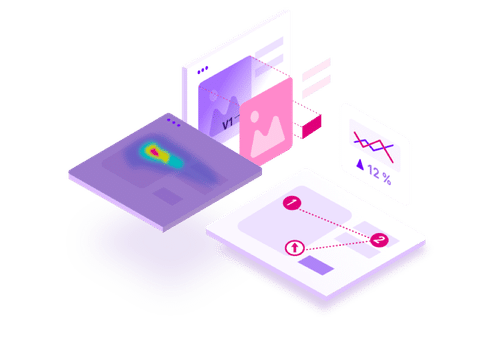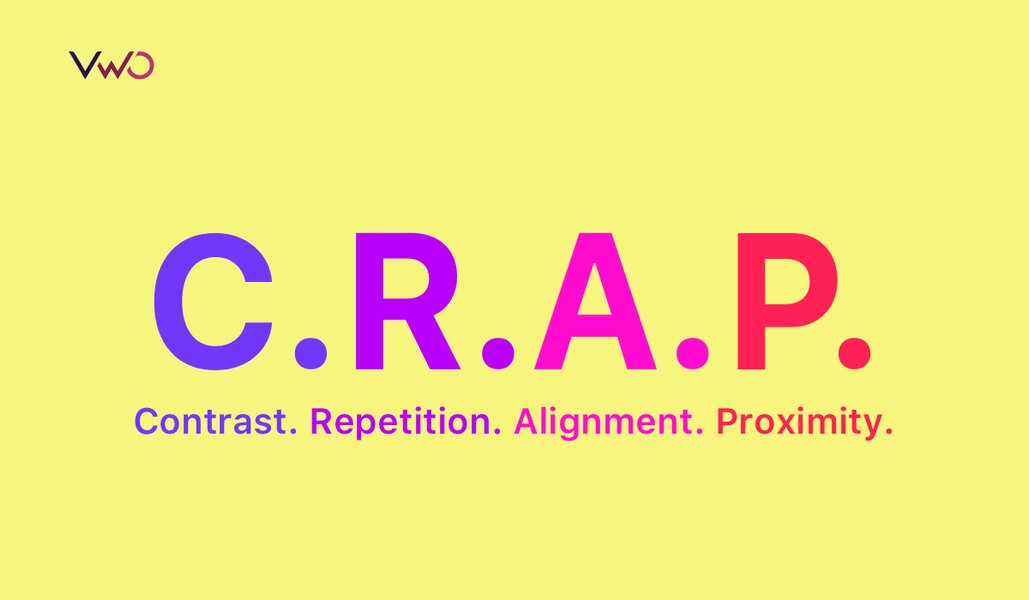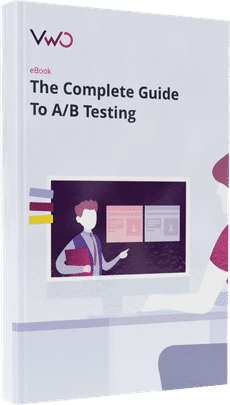Lessons From The Trenches Of UX Research: An Interview With Brooke Baldwin
VWO’s Masters of Conversion webinar series recently featured Brooke Baldwin, UX Research Lead at WhatsApp Inc., and Aniruddh Jain from the VWO Marketing team.
In this episode, Brooke talks about her passion for UX research, what her professional journey of more than two decades has looked like, and what these years have taught her about the human psyche.
At VWO, we believe that CRO and UX are a match made in heaven. They have a common aim – to delight users with a smooth browsing experience so that business metrics go up. As part of the CRO industry, we also recognize that UX efforts complement and lends long term benefit to optimization. Google’s recent experience algorithm that rolled out this year also prioritizes website user experience as a critical factor for ranking.
Download Free: Customer Experience Optimization Guide
Therefore a session on UX research with Brookes left us with rich learnings and we thought that it prudent to summarize the key highlights and insights from the conversation for you:
Brooke’s professional journey and her role at WhatsApp
Brooke started working with startups while she was in graduate school and has been in product design and research for a little over 20 years. While she initially had no master plan, she took up every opportunity that allowed her to learn and grow by working with people having diverse skill sets which amplified her innate skills.
A few years ago, she took up an exciting role at Facebook, where she worked for their Ads- Emerging Markets team in London. It allowed her to travel all over the world, spend time and conduct research in emerging markets including India, Mexico, Brazil, and Indonesia, and learn more about countries she’s always admired.
About a year and a half later, she thought it was time to challenge herself and look for other exciting opportunities within the company. WhatsApp had just decided that introducing a User Research team made business sense, and she was offered the chance to be one of the first researchers in the team. She thought it was the perfect next step for her given WhatsApp is a huge product in countries she’s always loved, been interested in, maybe have lived in, or have spent quite a bit of time in.
What keeps Brooke motivated and excited about her work?
Brooke likes to learn new stuff and would get bored if she has to do the same thing over and over again. She feels UX Research is a job that continually challenges her and offers an immense amount of learning. After all, it’s a job tailored for curious souls who are professional tinkerers.
She adds that the experience of witnessing engineers, product managers, or data scientists from her team get their hands dirty in the field with her and see how users in downtown USA or Hong Kong perceive the utility of the countless WhatsApp features is education above par.
UX Research for a Billion people
Brooke highlights that WhatsApp never tries to move the fastest to get the shiny new feature out as a company. With over 2 Billion monthly active users, they must take their time before any release to ensure that the voices of users from key markets and countries are heard. Therefore, in WhatsApp’s case, UX research typically involves much more than just traveling to one country for a week and talking to 20 users, for instance. She also talks about the fact that WhatsApp’s usage could vary drastically across geographies and analyzing the differences and similarities among such a diverse user population is a very important part of her job.
Evolution of UX Research over the decades
Brooke recollects that when she first started, her role was titled ‘Information Architect’, and usability testing was one of the foremost and primary responsibilities. Usability Study was one of the first things she learned where she’d expose a group of people to a prototype or simply a design on a piece of paper and have them work their way through it, which would help her figure out whether or not the design worked.
Over time, she feels that the umbrella of UX has evolved to embrace many disciplines (such as psychology, sociology, anthropology, and behavioral economy) that have their methodological approaches but come together to offer immense value to the field. While this could also lead to disagreement and chaos, most professionals she’s come across have been in favor of codifying and bringing a structure to their approaches. Over the years, working with experts from all these disciplines has truly widened her perspective and skillset in the discipline.
When to use which UX Research methodology?
Formative research is used to generate new product ideas, while summative research is used to evaluate a designed product. Formative research is carried out before beginning the product development to understand users’ pain points and figure out what exactly you can solve. Summative research, on the other hand, is used to test the efficiency and efficacy of your product design, before spending engineering bandwidth building it out entirely.
Another way to look at formative vs summative research – formative research is useful when the researcher’s purpose is to fix users’ problems with their product to make it more user-friendly. Formative testing should be conducted multiple times over a product’s design lifecycle and should be perceived as a directional compass for “what next” in the product from a usability lens. For example, usability testing of the feel and control of a working prototype of an IoT device is a means of formative research.
Summative research is useful when a product’s design has concluded. After completion, product owners typically try to understand what parts of a product are “high-utility” and the ones that aren’t. This research is best done after designing the product but before spending engineering time building it. An example of summative research is when 15-20 users test a mobile handset for features like battery life, gameplay experience, etc. before the device is launched to the public.
Brooke emphasizes that when looking for what to build next, you must carry out formative research, and to assess your product stickiness, summative research is the way to go.
Download Free: Customer Experience Optimization Guide
How do new businesses get started with UX Research?
Brooke advises new businesses not to hold back on UX research due to the lack of a large enough user pool. Whether it is your friends or family, you can get anyone who matches your typical user persona to review your product (or its prototype) and share their feedback. What’s important is to pick people who you know will not shy away from telling you the truth.
Brooke stresses the fact that when you are starting, it is natural to want to hear just positive reviews about something you’ve poured your heart and soul into. However, fighting that urge and the urge to tell people how to use your product is the hardest part. You need to fight the urge to intervene; let the user figure out your design by themselves and tell you their honest opinion.
Over time, Brooke has learned to embrace negative feedback as she feels it opens so many windows of opportunities for improvement.
The more different we are, the more similar we are
Brooke is a firm believer in the tenet that we have a lot more in common around the globe than we think. She realized that dreams of having a decent job, doing well for one’s family, saving up enough for a nice vacation, being a respected member of the community, are universal no matter which part of the world you go to.
She emphasizes that the hustle to do better for themselves and their loved ones is something she’s found common in people from every country she’s ever researched in. She finds such deeply universal traits uplifting and comforting.
How to make the most of a UX Research program
Brooke highlights that it’s important to start soon, yet go slow and not expect instant or continuous success. While it’s imperative to get feedback as frequently in the design life cycle as possible to confirm if your efforts are going in the right direction, you needn’t test every single product or feature, every single time. Instead, carefully assess the feasibility of your research program and learn to embrace its imperfections.
Must-have tools in UX Researcher’s stack
- The primary tool that a UX researcher cannot do without is a natural sense of curiosity. Brooke feels that the urge to know and understand people and why they perform a certain task in a particular way is the single most important thing for any UX researcher.
- Brooke highlights that the best researchers she knows have a high degree of self-awareness. This means that the clarity that they have about their minds and biases is borderline frightening. They know that they see the world in a certain way, and also acknowledge that maybe everyone else doesn’t.
Building UX for trust and authenticity
Brooke feels focusing on what causes distrust is easier and a more solvable problem. Her advice is to look for elements that cause distrust in the technology or the platform and eliminate those. Examples of elements that cause distrust would be unnecessary pop-ups in a site or app, unexpected charges being added during the time of checkout on an online store, or lack of a comprehensive and easy-to-understand privacy policy.
Conducting UX Research in a niche market
- Brooke advises that if it is unfeasible to test directly with your target persona, one can break down the roles and responsibilities of the person in question and then look for the next best representative or proxy who also meets the criteria.
- Another approach is Snowball Recruiting, wherein you can ask participants to connect you with their network where you are likely to find similar representatives.
Brooke’s UX reading list
The following are some books that Brooke seeks inspiration from, in her typical day at work:
- Don’t Make Me Think – Steve Krug
A guide on the principles of intuitive navigation and information design.
- Rocket Surgery Made Easy – Steve Krug
A guide on a realistic approach to usability testing that anyone can easily replicate for their site, application, or other product.
- Nudge – Richard Thaler & Cass Sunstein
An easy-to-understand take on the brain’s decision-making under uncertainty and designing environments that leverage how the brain functions.
- Thinking Fast And Slow – Daniel Kahneman
Insights into how humans think, how they make judgments and decisions, and how to unlock the benefits of slow thinking.
VWO’s views on UX research
UX research helps optimizers formulate better hypotheses, prioritize ideas effectively, and understand user journeys better. On the other hand, CRO helps UX researchers with the right set of testing tools and helps them validate ideas that stem out of their research. The real magic happens when both CRO and UX teams work in collaboration and share learnings. If you’re looking for an A/B testing tool, you can avail an all-inclusive and guided 30-day free trial here. Alternately, you can request a demo with our optimization experts to understand how VWO can take care of end-to-end CRO for you.



















